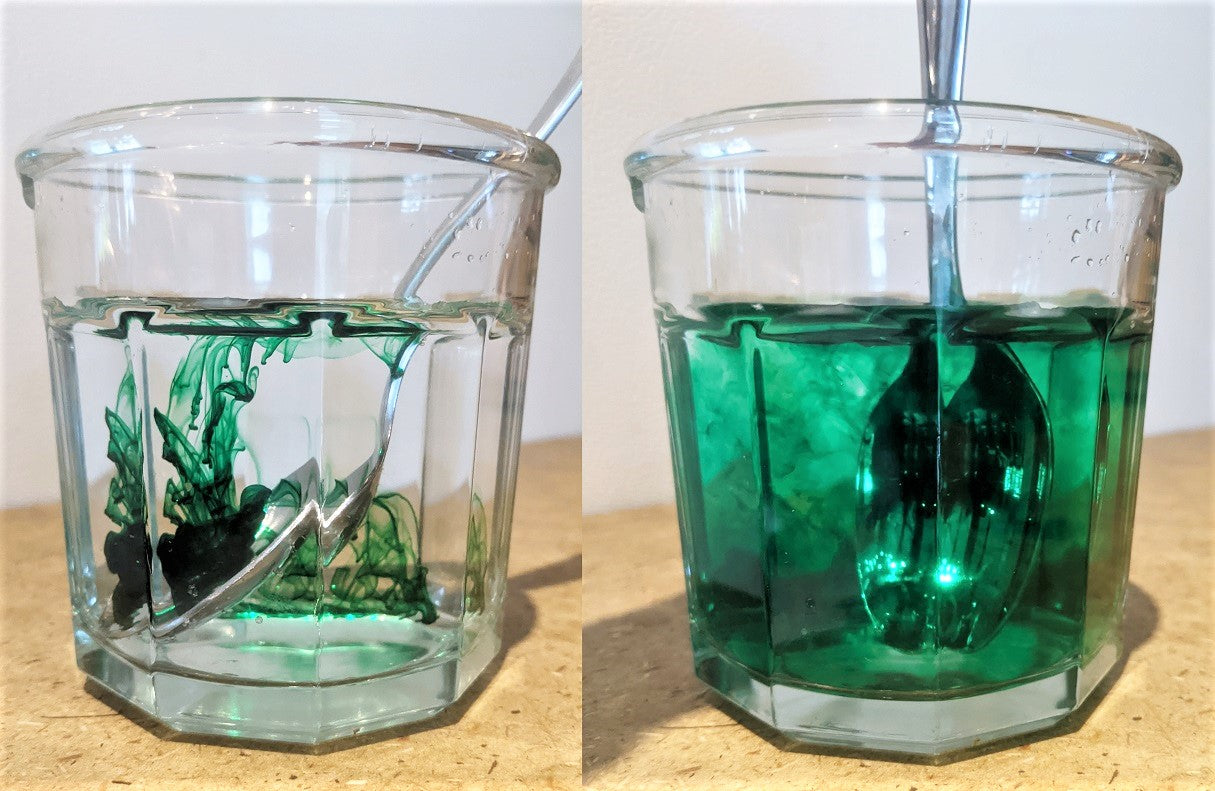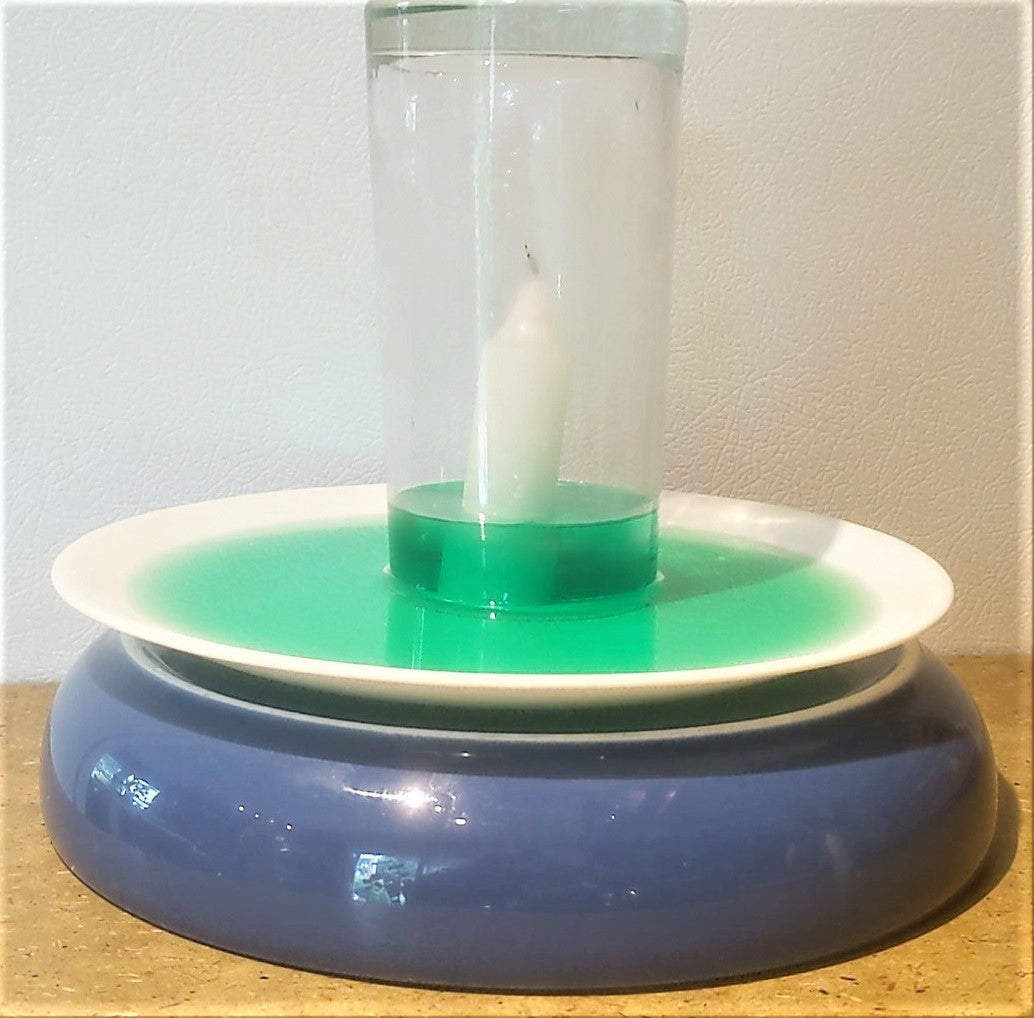20 Minute Labs: Self-Rising Water

MAKE WATER RISE ON ITS OWN!

Have you ever had your basketball leak air or your bike tire get a hole from a nail? The air rushes out, even making a whistling noise sometimes as your game or bike ride is put on hold.
Why does this happen? Well, it has to do with pressure gradient force. There's a lot of air packed into a tight space in your ball or tire, making the air pressure high compared to the air outside. When given the chance - through a hole - the inside air rushes out until the pressure is the same both inside and out - this is called equilibrium.
In this month's 20 Minute Lab, we'll use physics and our knowledge of air pressure to make it seem like water is rising all on its own. Ready to get started? You can do these experiments with common household items! Let's do science!
WHAT YOU'LL NEED
-
small cup

- water
- food coloring
- stirring spoon
- small plate
- small candle (something over an inch tall or so)
- tall, narrow glass that will fit over your candle with a bit of room above the flame
- match or lighter
LET'S GET STARTED!
-
Fill your small cup with water.

- Add about 4 drops of food coloring to the water (This helps to see the effects of the experiment).
- Stir the water and food coloring with your spoon.
- Slowly pour some of the water onto the plate - but not all the way to the very edge of the rim.
-
Place the candle in the middle of the plate.

- Ask an adult to light the candle with a match or lighter.
- Now, place your tall, narrow glass upside down over the candle.
- Observe what happens! You might want to repeat steps 6 and 7 several times to carefully observe when the most water rises!
Check out the video to see how it worked for us:
WHAT'S GOING ON?
 If you repeated the experiment a few times, you may have noticed that the water inside the glass rose a little bit when the candle was still burning. But then, when the flame went out, it really let loose and rose quickly! Why is that?
If you repeated the experiment a few times, you may have noticed that the water inside the glass rose a little bit when the candle was still burning. But then, when the flame went out, it really let loose and rose quickly! Why is that?You might guess that the water rose because the fire ate up all the oxygen in the glass, but this is not the case. If it were, the water would have risen at a steady rate and only while the candle burned. Instead, the water rose rapidly once it burned out.
 So what DID happen? Well, it all has to do with temperature and air pressure.
So what DID happen? Well, it all has to do with temperature and air pressure.
But once the flame goes out (because it ran out of oxygen to burn), the air inside the glass starts to quickly cool down; it contracts and takes up less space. This decreases the air pressure inside the glass.
Check out more experiments with air pressure with our Egg in a Bottle experiment or our Balloon in a Bottle experiment!
Let us know how your experiments turned out! Share your photos and results with us on Facebook, Twitter, Instagram, or send us an email to info@yellow-scope.com. We love getting your messages!
For more exciting experiments, check out our Yellow Scope science kits on the Shop tab of our website!



Chelsea Schuyler
Author